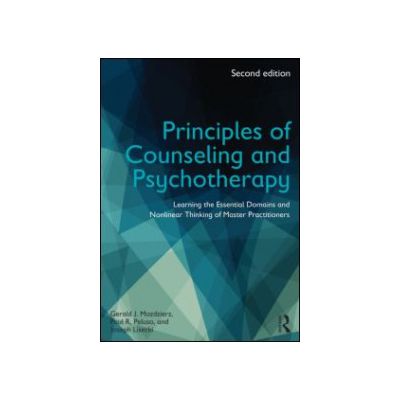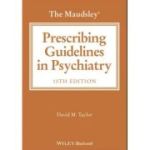Principles of Counseling and Psychotherapy Learning the Essential Domains and Nonlinear Thinking of Master Practitioners

Preț: 220,50 lei
Disponibilitate: în stoc la furnizor
Autor: Gerald J. Mozdzierz, Paul R. Peluso, Joseph Lisiecki
ISBN: 978-0-415-70461-8
Editura: Taylor & Francis
Anul publicarii: 2014
Ediția: 2
Pagini: 384
Format: paperback
Categoria: PSYCHIATRY
DESCRIERE
Research has shown that the most effective way to prepare students for practice with real clients is to learn to think in a new way rather than simply learning and using a set of steps. While there is much to be learned from what master practitioners do in their sessions, there is even more knowledge to gain from learning how they think. The second edition of Principles of Counseling and Psychotherapy offers students and practitioners a way to understand the processes behind effective outcomes with a wide variety of clients.
The second edition is infused with real-world clinical case examples and opportunities for readers to apply the material to the cases being presented. New "thought-exercise" sections are specifically designed to engage the reader’s natural non-linear thinking, and transcript material both from cases and from master therapists themselves are interwoven in the text.
Introduction: Learning to Think Like a Therapist: Characteristics of Expert Therapist Thinking and Why It Is Important to Learn How to Think Like a Therapist. 1. Overview of the State of Psychotherapy and the Domains of Competence. The Level I Practitioner Profile. 2. The Domain of Connecting With and Engaging the Client: Listening. 3. The Domain of Connecting With and Engaging the Client: Responding. 4. The Domain of Assessment: Clients’ Symptoms, Stages of Change, Needs, Strengths, and Resources. 5. The Domain of Assessment: The Theme Behind a Client’s Narrative, Therapeutic Goals, and Client Input About Goal Achievement. 6. The Domain of Establishing and Maintaining the Therapeutic Relationship and the Therapeutic Alliance: Relationship Building. 7. The Domain of Establishing and Maintaining the Therapeutic Relationship and the Therapeutic Alliance: The Therapeutic Alliance. The Level II Practitioner Profile. 8. The Domain of Understanding Clients’ Cognitive Schemas: Foundations. 9. The Domain of Understanding Clients’ Cognitive Schemas: Assessment and Clinical Conceptualization. 10. The Domain of Addressing and Managing Clients’ Emotional States: Basic Understandings. 11. The Domain of Addressing and Managing Clients’ Emotional States: Managing Common Negative Emotions in Therapy. 12. The Domain of Addressing and Resolving Ambivalence: Understanding and Identifying Client Ambivalence. 13. The Domain of Addressing and Resolving Ambivalence: Working With and Resolving Client Ambivalence. 14. Summary and the Disengagement/Engagement Hypothesis. References. Index
The second edition is infused with real-world clinical case examples and opportunities for readers to apply the material to the cases being presented. New "thought-exercise" sections are specifically designed to engage the reader’s natural non-linear thinking, and transcript material both from cases and from master therapists themselves are interwoven in the text.
Introduction: Learning to Think Like a Therapist: Characteristics of Expert Therapist Thinking and Why It Is Important to Learn How to Think Like a Therapist. 1. Overview of the State of Psychotherapy and the Domains of Competence. The Level I Practitioner Profile. 2. The Domain of Connecting With and Engaging the Client: Listening. 3. The Domain of Connecting With and Engaging the Client: Responding. 4. The Domain of Assessment: Clients’ Symptoms, Stages of Change, Needs, Strengths, and Resources. 5. The Domain of Assessment: The Theme Behind a Client’s Narrative, Therapeutic Goals, and Client Input About Goal Achievement. 6. The Domain of Establishing and Maintaining the Therapeutic Relationship and the Therapeutic Alliance: Relationship Building. 7. The Domain of Establishing and Maintaining the Therapeutic Relationship and the Therapeutic Alliance: The Therapeutic Alliance. The Level II Practitioner Profile. 8. The Domain of Understanding Clients’ Cognitive Schemas: Foundations. 9. The Domain of Understanding Clients’ Cognitive Schemas: Assessment and Clinical Conceptualization. 10. The Domain of Addressing and Managing Clients’ Emotional States: Basic Understandings. 11. The Domain of Addressing and Managing Clients’ Emotional States: Managing Common Negative Emotions in Therapy. 12. The Domain of Addressing and Resolving Ambivalence: Understanding and Identifying Client Ambivalence. 13. The Domain of Addressing and Resolving Ambivalence: Working With and Resolving Client Ambivalence. 14. Summary and the Disengagement/Engagement Hypothesis. References. Index
Categorii de carte
-Comandă specială
-Edituri
-Promo
-Publicaţii Callisto
-Cărţi noi
-- 387,45 leiPRP: 430,50 lei
- 401,63 leiPRP: 446,25 lei
- 552,83 leiPRP: 614,25 lei
Promoţii
-- 384,30 leiPRP: 640,50 lei
- 183,75 leiPRP: 262,50 lei
- 84,00 leiPRP: 210,00 lei















REVIEW-URI